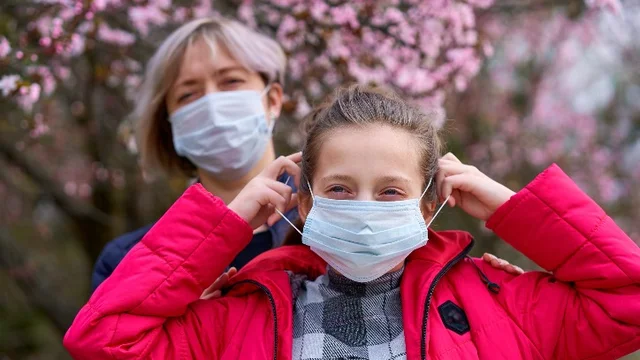Spring brings blooming flowers and warmer weather, but for millions of people worldwide, it also marks the onset of seasonal allergies triggered by pollen, dust, and other airborne particles. Sneezing, itchy eyes, and congestion can turn this vibrant season into a miserable experience. Fortunately, wearing a face mask—whether a disposable face mask or a specialized dust mask—can significantly reduce exposure to allergens. This article explains how to choose and use face masks effectively to combat spring allergies.
Understanding Spring Allergies and the Role of Masks
Using face masks can be instrumental in managing allergy symptoms during this time of year.
Pollen grains from trees, grasses, and weeds are microscopic and easily inhaled, triggering allergic reactions. Similarly, dust particles, mold spores, and pollution worsen symptoms. A well-fitted face mask acts as a physical barrier, filtering out these irritants before they enter your respiratory system. Studies show that face masks can reduce pollen inhalation by up to 80%, making them a practical tool for allergy sufferers.

Choosing the Right Mask for Pollen and Dust
Not all masks offer the same level of protection. Here’s a breakdown of common types:
1. Disposable Masks (Surgical Masks)
- Pros: Lightweight, affordable, and widely available. They block larger particles like pollen and dust.
- Cons: Looser fit allows smaller particles to enter through gaps. Not ideal for high-pollen days.
- Best for: Short outdoor activities (e.g., walking the dog) in moderate pollen conditions.
2. Dust Masks (N95/KN95 Respirators)
- Pros: Tight seal and advanced filtration (blocks ≥95% of particles ≥0.3 microns). Effective against pollen, fine dust, and even pollutants.
- Cons: Less breathable, may feel uncomfortable during prolonged use.
- Best for: High-pollen days, gardening, or outdoor work in dusty environments.
3. Reusable Cloth Masks
- Pros: Eco-friendly and customizable. Some include filter pockets for added protection.
- Cons: Effectiveness depends on fabric quality. Avoid loosely woven fabrics.
- Best for: Casual use if paired with a PM2.5 filter.
Tip: Look for masks labeled “NIOSH-approved” (for dust masks) or “ASTM-certified” (for surgical masks) to ensure quality.

How to Wear a Mask Properly for Allergy Prevention
A mask’s effectiveness hinges on proper usage:
1. Ensure a Snug Fit
- Mold the nose wire to seal gaps around the bridge of your nose.
- Avoid masks that slip when talking or moving.
2. Cover Both Nose and Mouth
- Allergens can enter through either pathway. Full coverage is essential.
3. Replace or Clean Regularly
- Disposable masks: Discard after 4–6 hours or if damp.
- Dust masks: Follow manufacturer guidelines (usually 8–10 hours of total use).
- Cloth masks: Wash daily with hot water and hypoallergenic detergent.
4. Avoid Touching the Mask
- Pollen particles can stick to the exterior. Remove the mask by the straps to avoid transferring allergens to your hands.
Maximizing Protection: Additional Tips
Combine mask use with these strategies for better results:
- Check Pollen Forecasts: Apps like Pollen.com provide real-time data. Stay indoors when counts are high (often mid-morning and early evening).
- Shower After Outdoor Activities: Pollen clings to hair and clothing.
- Use Air Purifiers: HEPA filters indoors complement outdoor mask use.
- Wear Sunglasses: Protects eyes from airborne irritants.
Common Questions About Mask Use for Allergies
Q: Can I reuse a disposable mask?
A: No. Disposable masks lose effectiveness after one use due to moisture and particle buildup.
Q: Are N95 masks necessary for pollen allergies?
A: For most people, a surgical mask suffices. However, N95s are recommended if you have severe allergies or are in extremely dusty areas.
Q: Do cloth masks work against pollen?
A: Yes, if they have multiple layers and a tight weave. Add a filter for enhanced protection.
Q: Can masks cause skin irritation?
A: Opt for hypoallergenic materials, and moisturize skin before wearing. Take mask breaks in safe environments.
Spring allergies don’t have to ruin your enjoyment of the season. By selecting the right face mask—whether a disposable mask for light protection or a robust dust mask for heavy pollen days—and using it correctly, you can breathe easier and reduce symptoms dramatically. Pair mask-wearing with smart habits like monitoring pollen levels and maintaining clean indoor air to reclaim the joys of spring!
Final Tip: Consult an allergist if symptoms persist, as masks are just one part of a comprehensive allergy management plan. Stay proactive, and embrace spring with confidence!


